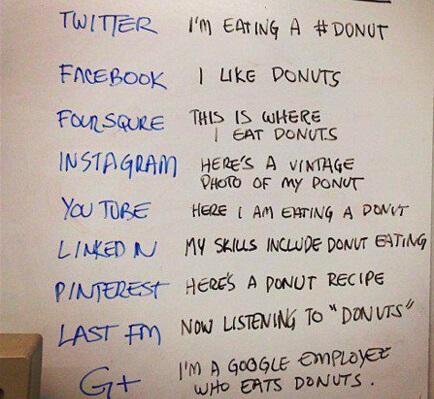Chapters
Besides keeping abreast of school curricula, the number one challenge for any tutoring business is finding new clients.
Every independent tutor knows things can go from feast to famine. Even something as innocuous as a change of seasons can bring a loss of students to a tutor.
When school's in session, you may have so many calls from hopeful clients you have to turn some of them away. After exam season, it always seems you are no longer fully booked and again have to search for new clients.
A good tutoring business will have a steady stream of clients contacting them for tutoring whether school is in session or not.
In the past, establishing a good client base depended on word-of-mouth references and/or paid advertising. Those methods of advertising your tutoring business are still viable but, these days, you should use social media tools to attract new clients, too.
Social media platforms allow you to share unique aspects of your business and, if done right, make academic tutoring look exciting and fun. Who knows? You may even become a viral sensation!
Whether you're familiar with and comfortable using social media or have never thought about using it to grow your tutoring business, Superprof wants to show you 10 ways you can use sites and apps like Facebook, Twitter, Pinterest and Instagram to market your tutoring business.

Reaching Your Target Audience
These days, any business worth their salt will invite you to 'Like us on FaceBook!', 'Follow us on Twitter/Instagram/Pinterest!'. You might think of their pleading for likes and followings as the digital way of casting the widest possible net, hoping to maximise returns.
Fortunately, digital net-casting is far less physically demanding than tossing an actual net out, reeling it in and sorting through your catch.
However, just like the fishermen who despair over having to sort discarded wellies and other non-fish items from their bounty, the savvy business person can't afford to waste precious time combing through scores of internet hits to find the few clients who might match their ideal customer profile.
Tip#1: To reach the audience you're looking for, advertise on the social media platforms they are most likely to use.
If you're a university student hoping to tutor college students through their A-Levels, jazzing up your FaceBook and/or Instagram profile would be a great idea because many such students are active on that site. However, if you're a mindfulness coach or a language tutor looking to establish yourself in the business community, you would do better (and have more credibility) if you spiffied up your LinkedIn profile.
The adage "you're known by the company you keep" has taken on new meaning in the digital age.
Now, it's less about the people you know than the social media platform you interact on. So, while an A-Level candidate might have no qualms about searching Instagram for a potential tutor, a more considering parent might never give those fun Insta profiles a chance.

How You Advertise is As Important as Where
Fun fact: to draw women into the automobile market, advertisers emphasised vehicles' aesthetic features. Before then, all of the advertising had been targeted to men - the cars' engine size and horsepower, mechanical features and technical specifications, even though studies had long proven that women largely made the households' major purchase decisions.
In that same spirit, uploading videos of brightly-coloured classrooms full of smiling kids will cause any university student looking for help with physics to 'swipe left', just as a few snaps of yourself, dressed in a business suit and conducting a workshop would.
Tip #2: Pick the medium that best works for you.
Ideally, you want a mix of written and visual information - perhaps a few student testimonials or short narrative descriptions of a remarkable scenario related to your tutoring, alongside a few snaps and maybe a video or two.
You don't want to give the impression that you have all day to be constantly taking pictures, recording videos or writing articles.
Always keep in mind who you're trying to reach. You might advertise your tutoring services across many platforms with only slight modifications in your presentation - more professional for LinkedIn, more enthusiastic for Insta and so on.
Get jobs for ex teachers here.
How Much Work Is Involved?
According to the latest figures released by TechJury, the average person spends up to two hours and 24 minutes per day on social media. For anyone considering advertising their business online, statistics such as these are both invigorating and unnerving.
In the plus column: with so many eyes actively engaged on the platforms you're on, you are bound to be discovered.
In the minus column: how can you make your profile and services stand out from all of the millions and millions of others?
Tip #3: Consider contracting the services of a graphics company
If you've scouted other tutors' social media profiles to see what's working for them, good on you - for more reasons than one. You might find inspiration in their page content or layout (if that particular platform allows layout personalisation) that could give you ideas of how you want your page to look. It also shows what the competition is doing, meaning: what you should do differently from (better than) them.
All things are possible online, especially if you know how to create using digital tools. If not, consider working with a graphic designer. Such a professional can personalise your timeline covers, adding unique illustrations or photographs that will appeal to followers.
The best part is that the captivating images they design for you can be shared across a host of networking sites and apps so even if you only have a small budget for graphics, it will go a long way. Once you build that killer page, you have to maintain it, of course.
Tip #4: Update posts regularly
One major downside to social media is that it has no qualms about telling everyone just how active you are on their platform.
Some publish a 'Last seen on...' date while others only highlight the date of your last interaction on the site - which may be even further back than your last login. It's a rather clever but a tad insidious way of keeping you coming back for more of their content; a sort of public shaming for not being there every single day.
The downside for people promoting their services on social media is that they can't afford to lag in their logins for fear of becoming irrelevant. To keep from falling into social media obscurity, update your status regularly and, if you're more active on Twitter than FB, connect your Facebook and Twitter posts to enable you to make the most of your time.
Find more teach English online here on Superprof.

Social Media Advertisement Best Practices
Marketing yourself in the digital age can be both time consuming and stress-inducing, especially if you get no immediate results. That is why the most successful tutors follow a set of best practices to maximise their exposure and gain the most students.
Tip #5: Create good content
Everybody has their opinion of what constitutes good content; most people believe that it is content that they like and enjoy. That is true to the extent that social media is meant to be social - meaning widely appealing. But if you're using your social media accounts to promote yourself as a tutor, your content must be more exacting. Specifically, it must be
- targeted to your desired audience
- timely: update your content to reflect school 'seasons' - breaking for summer/winter, exams month, etc.
- relevant not just to potential clients but to the topics you tutor in
- relatable: create that 'Yeah, me too!' feeling
- engaging: you want people to see what you're going to post next
- shareable: as your social network grows, you want your followers to re-post or link to your content
When you update your LinkedIn, Pinterest or Twitter accounts - or any social media platform you have a presence on, make sure that what you are sharing is engaging, interesting or informative enough for followers and friends to pass your content along to their friends.
Besides the common platforms to connect on, you might start a blog, vlog or podcast. You might write interesting articles or record videos about your experiences as a teacher or tutor for other sites link to or upload. This is where sites like Reddit, Tumblr and Pinterest are useful.
If you do create such content, make sure it is filled with useful information or entertaining infographics. Embed Pinterest or Reddit boards onto your website so potential clients can easily see your activity on this site/app.
Find more jobs for ex teachers here on Superprof.
Reading Gets the Short-Shrift
Ever since the explosion of freely available media, reading - for entertainment or to learn has steadily fallen out of favour. The trend started in the mid-20th Century, when televisions became widely available and grew exponentially with the advent of free-to-view video sites such as YouTube and Vimeo.
Most educators we know have firm views on the decline of reading and you may have a few well-thought-out opinions, too. None of what we think matters; it's how those digital natives - our prospective clients consume information that's important to them.
Instagram was the fastest growing social network in 2013. In the UK, Instagram overtook Twitter for the first time in their number of users (7.3 compared to 6.9 million users, respectively) in 2012. People also spent more time on Instagram than on Twitter on their smartphones (257 minutes compared to just 170 minutes, respectively). This clearly demonstrates the new importance of the visual.
Tip#6: Think Visually
Use Instagram to provide followers with pictures that show how fun, creative and inspiring your tutoring sessions are. Create short Tiktok videos of your students happily learning. Remember those graphic artists we suggested you contract to spruce up your social media pages? Those visuals will blend in neatly with your newly-implemented strategy to be a visual marketer.
Remember that, while sharing content across multiple platforms makes it a snap to keep your social media accounts fresh, it's not necessarily a good idea to do so. For one, you might lose followers if they go from your FB page to your Insta and see the same pictures, videos and anecdotes.
Also, keep in mind that you're targeting your adverts to specific audiences. What you post on Pinterest might not mesh well with your LinkedIn profile and your FB feed may clash with the rest of your social media accounts.

Tip #7: Diversify what you post
If you post short videos of entertaining parts of your class on Facebook or Instagram, save your blogs/vlogs about interesting teaching methods or new techniques you tried in class for Pinterest and LinkedIn. How about those witty, snappy answers your student gave? Those would be great for Twitter
The bottom line is: many potential clients will be wary about hiring someone they don’t know. By seeing you do what you do best (tutoring students) across multiple platforms and in multiple settings, they may feel more inclined to contact you.
In the olden days - say, 10 years ago, you might have wondered how prospective clients would find you if your content varies so much and is scattered across so many platforms. These days, such worries are completely unfounded: you can link all of your social media accounts together. Aren't hashtags a wonderful thing?
Tip #8: Use hashtags and relevant keywords frequently and repeatedly
Hashtags can identify issues you connect with (#environment, #learningisfun) and make your brand and content easier to find. Targeted keywords are another way for people to find you quickly.
Let's say a desperate student needs a maths or English tutor urgently. S/he won't search Google or FB for 'tutors near me'; s/he'll type in 'English tutors near me' or 'Maths tutors near me'. Including those keywords will make all the difference in your profile heading up the list of available tutors in your area.
Likewise, being as active as possible on social media will boost your profile. Many social media platforms use algorithms to calculate how frequently users contribute and how much of a response they get to the content they post. Some will accord you a star-rating that other users can see; the more stars you have, the more active - the more social you are.
Tip #9: Respond to comments and queries as soon as possible
Favourable algorithm treatment is one reason to contribute frequently to conversational threads; another is that you will come across as professional and accessible, especially if you jump in on topics directly related to tutoring or education.
You don't have to wrack your brain to come up with topics all on your own; putting your two cents in on other open discussions will give you more exposure, with will lead to more followers, more contacts and perhaps even more requests for tutoring.
Finally, our tenth tip: follow influential movers and shakers in the educational sector.
When we think of social media influencers, chefs, beauty experts and fashionistas come to mind but there is a whole other type of influencer out there: the ones who promote learning and education.
These teachers have long experience in leading the education conversation. They post content relevant to learning initiatives, how to navigate difficult teaching situations - teaching online and social distancing in the classroom happen to be top topics, these days.
Following such influencers may give you ideas on marketing your services and managing your tutoring business. Their popularity may give your social media profiles a boost and, who knows? They may follow you back and indirectly lead you to a larger following.
Creative use of social media can be an effective way of winning new customers, so why not give it a try?












Really useful! Thanks